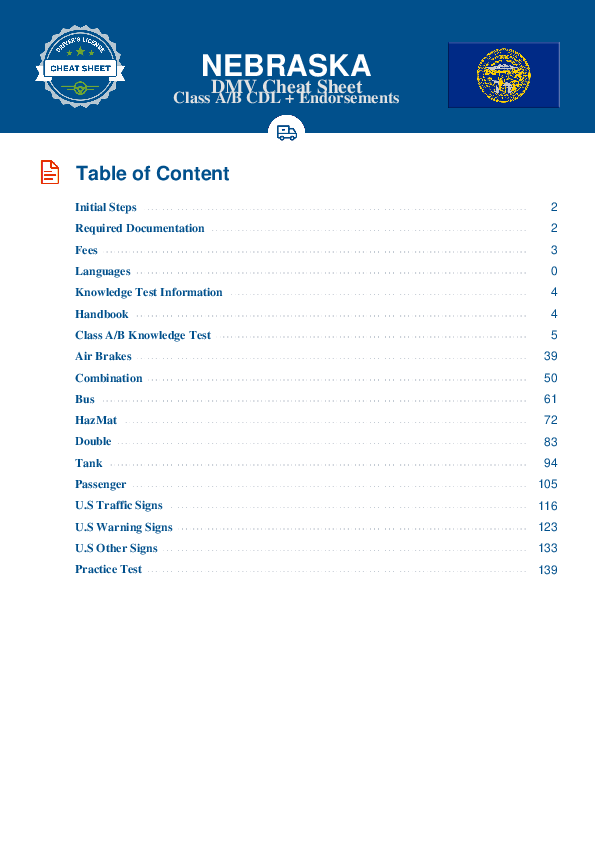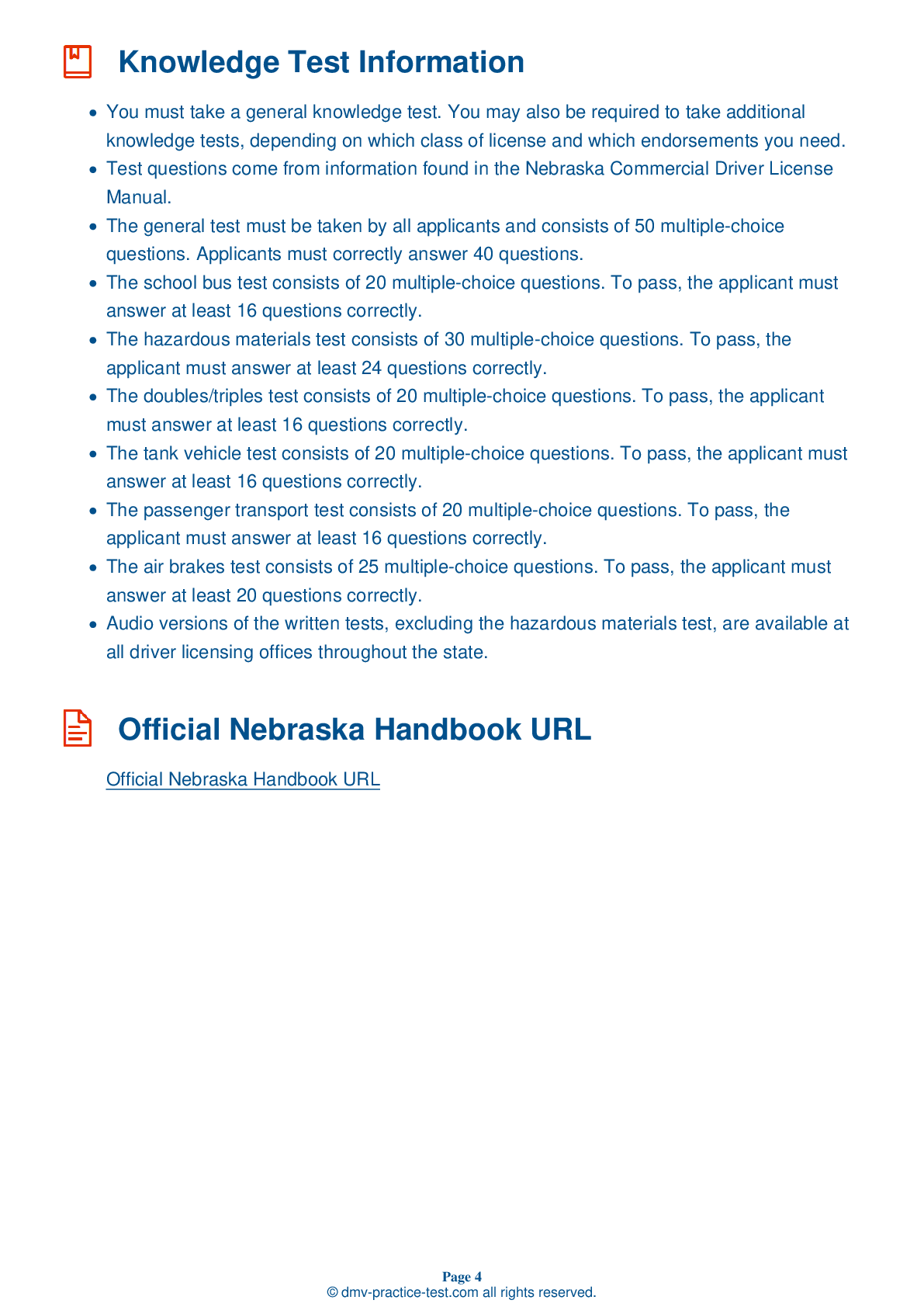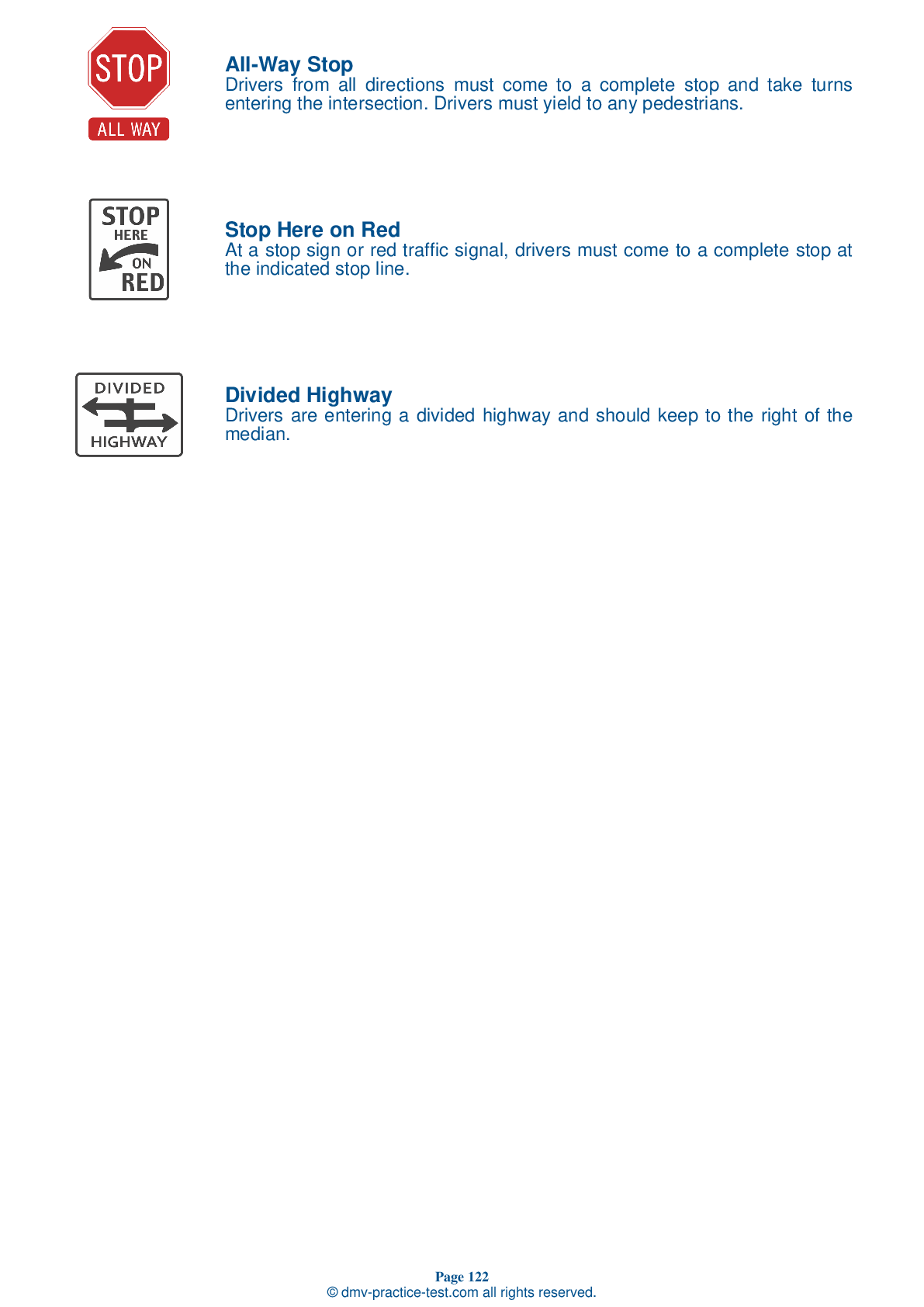Class A Driving Test | Nebraska 2025 #1 Page 3 of 7
Train for FREE online with our Nebraska class A license test. The official exam test consists of several obligatory parts, with all of them checking your knowledge of different blocks of road rules. If you need to obtain a NE CDL class A permit in 2025, practice as much as possible. Free sample tests published on our website will help you check and improve your knowledge and boost your grades. Please bear in mind that CDL class A requirements may vary from state to state.
15 . If your truck or trailer catches fire, you should:
If there is a fire in your vehicle, the first thing you need to do is leave the road and stop. Park in an open area away from anything that could catch fire, such as plants or other vehicles. Do not pull into a service station.
16 . If one-fourth of the leaves in a leaf spring are missing when a vehicle is inspected:
When inspecting a vehicle's suspension, you should look for broken or missing leaves in the leaf springs. Any defect of this kind is dangerous. If one-fourth or more of the leaves are missing from any leaf spring, the vehicle must be put out-of-service.
17 . If you notice anything affecting the safety or mechanical functioning of your CMV while driving, you should:
At the end of each day of driving, you may be required to make a written report on the vehicle or vehicles driven. Be sure to make note of any issues that could affect the safety of the vehicle or that could lead to a mechanical breakdown.
18 . Good drivers consistently look ____ seconds ahead of their vehicles.
Most good drivers consistently look down the road 12 to 15 seconds ahead of their vehicles. Watching ahead of your vehicle will allow you to react to upcoming hazards before meeting them.
19 . Frequent blinking may be a sign of fatigue.
Frequently blinking, having difficulty focusing, or experiencing heavy eyelids are possible warning signs of fatigue. If you are fatigued, it is safest to stop driving and leave the road.
20 . If braking at a speed of 55 mph while driving on dry pavement, the brake lag can add ____ to your vehicle's total stopping distance.
The total stopping distance for vehicles equipped with air brakes is made up of four factors: perception distance, reaction distance, brake lag distance, and braking distance. When braking at a speed of 55 mph while driving on dry pavement, the brake lag can add around 32 feet to a vehicle's total stopping distance.
21 . What is the average driver’s reaction time?
The average driver has a reaction time between three-quarters of a second and one second. At 55 mph, this corresponds to a distance of 61 feet traveled.
See the exact questions that will be on the 2025 Nebraska DMV exam.
99.2% of people who use the cheat sheet pass the FIRST TIME
Lillian MCcranie explains how our CDL study guide was helpful in passing the exam and recommends it to everyone.
Cameron tells us how he purchased the CDL exam, and found it to be a useful tool which helped him pass the exam and find a job.



